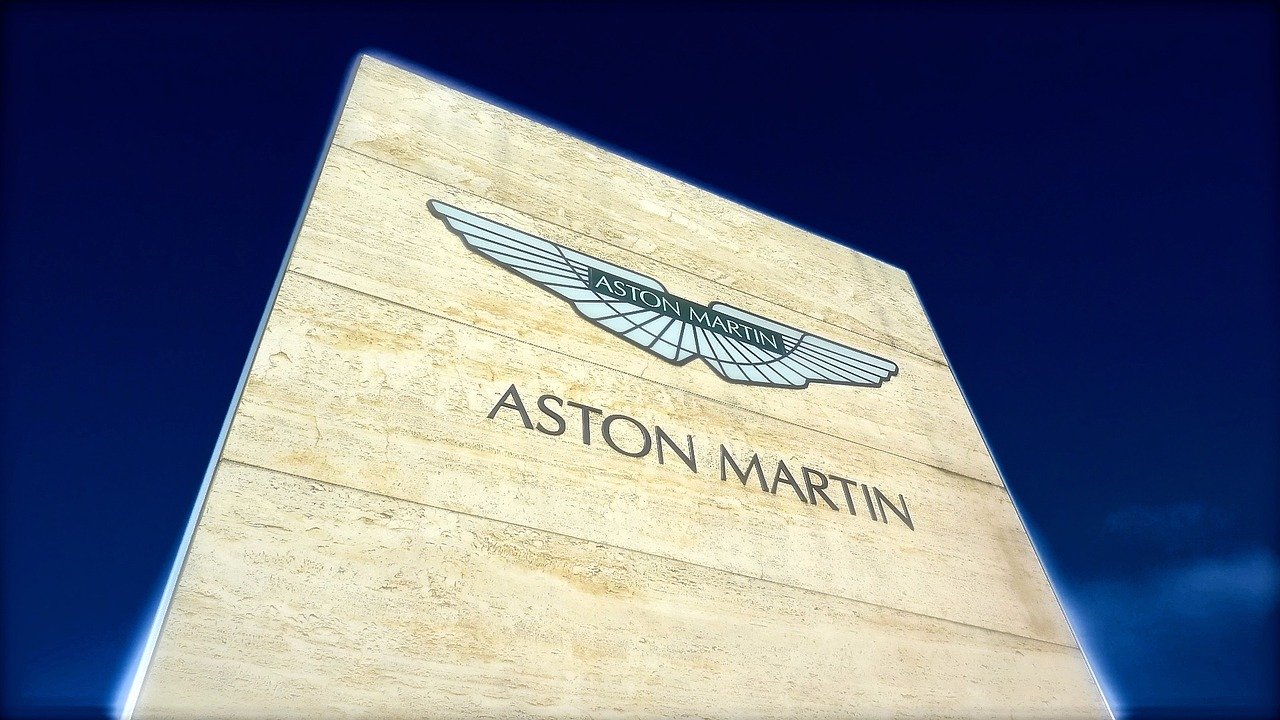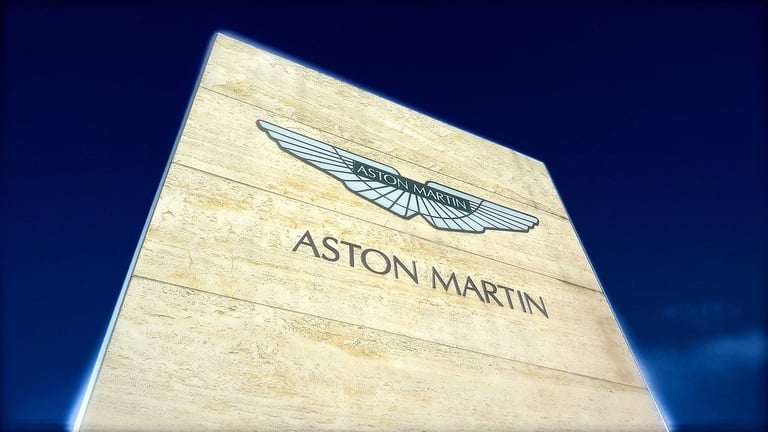Aston Martin Lagonda Global Holdings plc (LON:AML) has announced its third quarter results for the three months ended 30 September 2025
· Q3’25 performance reflects previously announced lower than expected wholesale volumes
· Valhalla deliveries commenced in October 2025
· First deliveries of Valhalla, DBX S and Vantage S are expected to drive sequential improvement in Q4’25 financial performance
· Immediate actions taken to further reduce FY25 capex to c. £350m and SG&A to c. £275m
· Future product cycle plan under review targeting 5-year capex of c. £1.7bn reduced from c. £2bn and driving operating leverage through disciplined cost management
· Continue to expect FY26 profitability and cash flow to materially improve compared with FY25
| £m | YTD 2025 | YTD 2024 | % change | Q3 2025 | Q3 2024 | % change |
| Total wholesale volumes1 | 3,352 | 3,639 | (8%) | 1,430 | 1,641 | (13%) |
| Revenue | 739.6 | 994.6 | (26%) | 285.2 | 391.6 | (27%) |
| Gross profit | 209.4 | 376.9 | (44%) | 82.8 | 144.0 | (43%) |
| Gross margin (%) | 28.3% | 37.9% | (960 bps) | 29.0% | 36.8% | (780 bps) |
| Adjusted EBIT2 | (172.1) | (121.5) | (42%) | (50.6) | (21.7) | (133%) |
| Operating loss | (190.8) | (132.8) | (44%) | (56.1) | (26.7) | (110%) |
| Loss before tax | (252.7) | (228.9) | (10%) | (111.9) | (12.2) | (817%) |
| Net debt2 | (1,381.0) | (1,216.5) | (14%) | (1,381.0) | (1,216.5) | (14%) |
1 Number of vehicles including Specials; 2 For definitions of alternative performance measures please see Appendix
Adrian Hallmark, Aston Martin Chief Executive commented:
“This year has been marked by significant macroeconomic headwinds, particularly the sustained impact of US tariffs and weak demand in China. In response to these market dynamics, we have taken, and continue to take, proactive steps to strengthen our overall position. Work is underway to review our future product cycle plan with the aim of optimising costs and capital investment whilst continuing to deliver innovative, class leading products to meet customer demands and regulatory requirements.
“Our core range of models, supported by recent new derivatives, has never been stronger. Valhalla, our first mid-engined plug-in hybrid, enhances this further and in October we reached a pivotal moment in delivering the first of these landmark supercars. We expect to ramp up Valhalla deliveries during the fourth quarter, which will be instrumental in driving improved sequential Q4 2025 financial performance. More importantly, the planned delivery of around 500 Valhallas in 2026, is expected to bolster our profitability and cash flow for the year ahead, in addition to ongoing cost efficiencies.”
Lawrence Stroll, Aston Martin Executive Chairman commented:
“2025 has brought several unexpected challenges at Aston Martin which the Company, under Adrian’s leadership, is actively adapting to. My confidence in the long-term prospects for this iconic British brand and commitment to the Company remains unwavering. The positive reception to all our new core models and the groundbreaking Valhalla, which I’ve experienced first-hand, will help propel Aston Martin forward in 2026 and beyond.”
Aston Martin’s CEO and CFO will host a Q&A at 8:30am (GMT) today. Details can be found on page 6 of this announcement and online at www.astonmartin.com/corporate/investors
Wholesale volume summary
| Number of vehicles | YTD 2025 | YTD 2024 | % change | Q3 2025 | Q3 2024 | % change |
| Total wholesale | 3,352 | 3,639 | (8%) | 1,430 | 1,641 | (13%) |
| Core (excluding Specials) | 3,332 | 3,481 | (4%) | 1,428 | 1,601 | (11%) |
| By region: | ||||||
| UK | 628 | 664 | (5%) | 250 | 369 | (32%) |
| Americas | 1,080 | 1,112 | (3%) | 433 | 477 | (9%) |
| EMEA ex. UK | 1,008 | 1,101 | (8%) | 469 | 427 | 10% |
| APAC | 636 | 762 | (17%) | 278 | 368 | (24%) |
| By model: | ||||||
| Sport/GT | 2,394 | 2,416 | (1%) | 999 | 1,043 | (4%) |
| SUV | 938 | 1,065 | (12%) | 429 | 558 | (23%) |
| Specials | 20 | 158 | (87%) | 2 | 40 | (95%) |
Note: Sport/GT includes Vantage, DB11, DB12, DBS and Vanquish
Q3 2025 total wholesale volumes of 1,430 were down 13% compared to the prior year period (Q3 2024: 1,641). This was as a result of the heightened challenges in the global macroeconomic environment impacting demand including the ongoing effect of tariffs, in addition to the planned delivery of fewer Specials. Retail volumes in Q3 2025 were in line with total wholesales.
Aston Martin expects to realise the benefits from its expanded range of new core models and Specials in Q4 2025, and beyond. Core models now include Vanquish Volante with deliveries commencing in Q3 2025 and DBX S, Vantage S and Volante 60th anniversary limited edition models deliveries commencing in Q4 2025 whilst DB12 S deliveries will commence in the first half of 2026. The significant milestone of delivering the first of the 999 Valhallas was achieved in October following homologation approvals being received in Europe. The Group expects to deliver c. 150 Valhallas in Q4 2025, assuming no impact from the current U.S. federal government shutdown or the U.S. tariff quota system.
During this period of continued product evolution, the orderbook for core vehicles has remained unchanged, extending for up to five months. An extensive global programme of Valhalla customer driving events is underway in Q4 2025. This will give current and prospective customers the first opportunity to experience the exceptional performance of Aston Martin’s first series production mid-engined hybrid supercar, with over 50% already ordered by customers.
As previously announced, volumes across most regions were weaker than expected in Q3 2025. The timing of various model transitions and deliveries across the regions over the past year also impacted Q3 2025 volumes when compared to the prior year period. Demand in China remained extremely subdued in line with other luxury automotive peers due to the ongoing weak macroeconomic environment and changes to the luxury car tariff effective from the end of July 2025.
Revenue and Average Selling Price (ASP) summary
| £m | YTD 2025 | YTD 2024 | % change | Q3 2025 | Q3 2024 | % change |
| Sale of vehicles | 654.7 | 913.4 | (28%) | 255.5 | 364.6 | (30%) |
| Total ASP (£k) | 194 | 250 | (22%) | 178 | 222 | (20%) |
| Core ASP (£k) | 186 | 178 | 4% | 177 | 177 | 0% |
| Sale of parts | 67.3 | 64.6 | 4% | 22.6 | 21.8 | 4% |
| Servicing of vehicles | 9.1 | 8.8 | 3% | 3.4 | 2.5 | 36% |
| Brand and motorsport | 8.5 | 7.8 | 9% | 3.7 | 2.7 | 37% |
| Total revenue | 739.6 | 994.6 | (26%) | 285.2 | 391.6 | (27%) |
YTD 2025 revenue decreased by 26% to £740m (YTD 2024: £995m), due to the impact of fewer core volumes and, as expected, lower Special deliveries compared to the prior year. While total ASP decreased by 22%, again reflecting fewer Specials, core ASP increased 4%, benefitting from the next generation core derivatives, including the flagship Vanquish and Vanquish Volante. Demand for unique product personalisation continued to drive strong contribution to core revenue YTD 2025 of c. 18%, broadly in line with prior year period.
Core ASP of £177k in Q3 2025 was lower sequentially (Q2 2025: £191k) due to foreign exchange movements, with the U.S. dollar in particular weakening compared to GBP sterling, and support for dealers.
Income statement summary
| £m | YTD 2025 | YTD 2024 | Q3 2025 | Q3 2024 |
| Revenue | 739.6 | 994.6 | 285.2 | 391.6 |
| Cost of sales | (530.2) | (617.7) | (202.4) | (247.6) |
| Gross profit | 209.4 | 376.9 | 82.8 | 144.0 |
| Gross margin % | 28.3% | 37.9% | 29.0% | 36.8% |
| Adjusted operating expenses | (381.5) | (498.4) | (133.4) | (165.7) |
| of which depreciation & amortisation | 179.8 | 234.4 | 61.3 | 72.4 |
| Adjusted EBIT2 | (172.1) | (121.5) | (50.6) | (21.7) |
| Adjusting operating items | (18.7) | (11.3) | (5.5) | (5.0) |
| Operating loss | (190.8) | (132.8) | (56.1) | (26.7) |
| Net financing (expense)/income | (61.9) | (96.1) | (55.8) | 14.5 |
| of which adjusting financing income/ (expense) | 3.0 | (19.2) | 0.5 | 3.1 |
| Loss before tax | (252.7) | (228.9) | (111.9) | (12.2) |
| Tax (charge)/ credit | (27.8) | 9.2 | (19.9) | 0.1 |
| Loss for the period | (280.5) | (219.7) | (131.8) | (12.1) |
| Adjusted EBITDA2 | 7.7 | 112.9 | 10.7 | 50.7 |
| Adjusted EBITDA margin2 | 1.0% | 11.4% | 3.8% | 12.9% |
| Adjusted loss before tax2 | (237.0) | (198.4) | (106.9) | (10.3) |
2 Alternative Performance Measures are defined in Appendix
The lower YTD 2025 revenue, as a result of the decrease in Specials deliveries and core volumes, also impacted gross profit, which decreased to £209m (YTD 2024: £377m), resulting in a gross profit margin of 28% (YTD 2024: 38%). This includes the impact of the previously communicated warranty costs and other investments made in product quality. The volume impact was reflected in the Q3 2025 gross margin of 29% (Q3 2024: 37%), as was the previously announced support for dealers in China, ongoing support across other regions and foreign exchange movements compared to the prior year period.
Adjusted EBITDA decreased by £105m YTD 2025 to £8m (YTD 2024: £113m) with adjusted EBITDA margin declining to 1% (YTD 2024: 11%). This reflects the lower gross profit, which was partially offset by a 24% decrease in adjusted operating expenses (excluding D&A). This aligns with the Group’s focus on optimising the cost base, as part of its ongoing transformation programme. Operating expenses include the £11m benefit from the revaluation uplift of the secondary warrant option offset by c. £3m fees associated with the disposal of the Group’s AMR GP investment. The Group now expects to reduce FY 2025 adjusted operating expenses (excluding D&A) to c. £275m (FY 2024: £313m) and to drive further operating leverage through disciplined cost management from 2026 onwards.
Adjusted EBIT decreased by 42% YTD 2025 to £(172)m (YTD 2024: £(122)m) with depreciation and amortisation decreasing by 23% to £180m (YTD 2024: £234m), primarily reflecting fewer Specials.
Adjusted net financing costs of £65m (YTD 2024: £77m), decreased primarily due to the £17m year-on-year impact of non-cash U.S. dollar debt revaluation due to the weaker U.S. dollar. YTD 2025 net adjusting finance income of £3m relates to movements in the fair value of outstanding warrants. The prior year net adjusting finance expense of £19m comprised of an £18m redemption premium associated with the refinancing of senior secured notes and a £1m movement in fair value of outstanding warrants.
The adjusted loss before tax increased to £237m (YTD 2024: £198m loss), largely reflecting the weaker volumes and adjusted EBIT.
Cash flow and net debt summary
| £m | YTD 2025 | YTD 2024 | Q3 2025 | Q3 2024 |
| Cash (used in)/generated from operating activities | (89.4) | (51.4) | (8.4) | 20.5 |
| Cash used in investing activities (excl. interest) | (254.0) | (300.0) | (83.4) | (99.9) |
| Net cash interest paid | (71.6) | (42.4) | (2.2) | (1.8) |
| Free cash outflow2 | (415.0) | (393.8) | (94.0) | (81.2) |
| Cash inflow from financing and other investing activities (excl. interest) | 307.9 | 163.4 | 216.9 | 69.6 |
| (Decrease)/increase in net cash | (107.1) | (230.4) | 122.9 | (11.6) |
| Effect of exchange rates on cash and cash equivalents | (5.1) | (5.1) | 0.9 | (4.2) |
| Cash balance | 247.4 | 156.9 | 247.4 | 156.9 |
| Available facilities | 0.4 | 154.1 | 0.4 | 154.1 |
| Total cash and available facilities (“liquidity”) | 247.8 | 311.0 | 247.8 | 311.0 |
2 Alternative Performance Measures are defined in Appendix
YTD 2025 net cash outflow from operating activities increased by £38m to £89m (YTD 2024: £51m outflow), largely reflecting a £105m decrease in adjusted EBITDA, as explained above, offset by a reduced working capital outflow of £45m (YTD 2024: £142m outflow). The largest drivers of the YTD 2025 working capital outflow were:
· A £78m increase in inventories (YTD 2024: £108m increase) ahead of commencing delivery of new core derivatives and Valhalla and a £10m decrease in payables (YTD 2024: £8.4m increase)
· which were partially offset by a £43m increase (YTD 2024: £123m decrease) in deposits held, due to Valhalla deposit collections more than offsetting the deposit outflow from other Special deliveries and flat receivables (YTD 2024: £80m decrease)
Capital expenditure of £254m was below the comparative period (YTD 2024: £300m) and as part of its immediate review on cost and capex, the Group now expects FY 2025 to be c. £350m. This compares with the original guidance of c. £400m at the start of the year and c. £375m as at the Q3 Trading Update. Further, the Group is undertaking actions related to its future product cycle plan that will enable the Group to target a reduction in 5-year capex from c. £2bn to c. £1.7bn. Further details on this will be shared at its 2025 Full Year Results.
YTD 2025 free cash outflow increased by £21m compared to the comparative period to £415m (YTD 2024: £394m outflow), due to the increase in cash outflow from operating activities as detailed above and the increase in net cash interest more than offsetting the reduction in capital expenditure.
| £m | 30-Sep-25 | 31-Dec-24 | 30-Sep-24 | |
| Loan notes | (1,326.5) | (1,378.9) | (1,227.4) | |
| Inventory financing | (38.8) | (38.4) | (39.8) | |
| Bank loans and overdrafts | (170.1) | (8.4) | (8.3) | |
| Lease liabilities (IFRS 16) | (94.4) | (96.6) | (97.9) | |
| Gross debt | (1,629.8) | (1,522.3) | (1,373.4) | |
| Cash balance | 247.4 | 359.6 | 156.9 | |
| Cash not available for short term use | 1.4 | 0.0 | 0.0 | |
| Net debt | (1,381.0) | (1,162.7) | (1,216.5) |
Compared with 31 December 2024, gross debt increased to £1,630m (31 December 2024: £1,522m) as a result of drawing on the Revolving Credit Facility.
Total cash and available facilities were £248m on 30 September 2025 marginally improved compared with £228m on 30 June 2025, with the free cash outflow in the period more than offset by the c. £106m inflow of net proceeds following the completed sale of AMR GP shares.
Net debt of £1,381m at 30 September 2025 increased from £1,163m as at 31 December 2024 primarily due to a decrease in the cash balance and increase in banks loans and overdrafts. The adjusted net leverage ratio of 8.3x (30 September 2024: 4.2x) reflects the increase in net debt and YTD decline in adjusted EBITDA.
Outlook: Now reflects immediate actions taken following Q3 Trading Update (on 6 October 2025)
The global macroeconomic environment facing the wider automotive industry remains challenging. This includes uncertainties over the economic impact from U.S. tariffs and the implementation of the quota mechanism, changes to China’s ultra-luxury car taxes and the increased potential for supply chain pressures, particularly following the recent cyber incident at a major UK automotive manufacturer.
Q4 2025 is expected to deliver improved sequential financial performance, supported by increased core volumes driven by new derivatives in addition to the accretive financial contribution from the initial deliveries of Valhalla. The Group expects total wholesale volumes in FY 2025 to decline by mid-to-high single digit percentage compared to the prior year (FY 2024: 6,030).
As previously reported, the Group expects FY 2025 adjusted EBIT to be below the lower end of the range of market consensus available prior to the 6 October 2025 Trading Update (consensus adjusted EBIT low end range: £(110)m). This was driven by the weaker volumes and pressure on the gross margin per vehicle. The Group expects sequential gross margin improvement in Q4 2025 resulting in FY 2025 gross margin in the low 30s%.
FY 2025 capex is now expected to reduce to c. £350m (previously c. £375m as at the Q3 Trading Update, and c. £400m as at the start of the year) with a further reduction in adjusted operating expenses (excluding D&A) to c. £275m (FY 2024: £313m). Notwithstanding these actions, the Group no longer expects to meet its prior guidance of positive free cash flow generation in H2 2025. However, the Group expects free cash outflow to improve sequentially in Q4 2025, including an increase in receivables at the end of the period due to the expected timing of vehicle sales.
The Group expects FY 2026 profitability and cash flow to materially improve compared with FY 2025. This will be driven by the contribution from Valhalla deliveries from the start of the year (expected to be c. 500 units in total in FY 2026) in addition to driving improved operating leverage.
As part of the immediate actions on costs and capital expenditure, a review of the future product cycle plan is underway. It is expected that this will result in lower capital investment in engineering and development than previously guided down from c. £2bn to c. £1.7bn over the coming 5-year period.
For UK automotive manufacturers, the introduction of a U.S. tariff quota mechanism adds a further degree of complexity and limits the Group’s ability to accurately forecast for this financial year end and, potentially, quarterly from 2026 onwards.
Aston Martin continues to engage with both the U.S. and UK governments to secure greater clarity and certainty. Whilst positive dialogue on this matter has been achieved directly with the U.S. government, the Company continues to seek more proactive support from the UK government to protect the interests of small volume manufacturers, like Aston Martin, who provide thousands of jobs, making an important contribution to local economies and to the wider UK automotive supply chain.
The financial information contained herein is unaudited.
All metrics and commentary in this announcement exclude adjusting items unless stated otherwise and certain financial data within this announcement have been rounded.









































